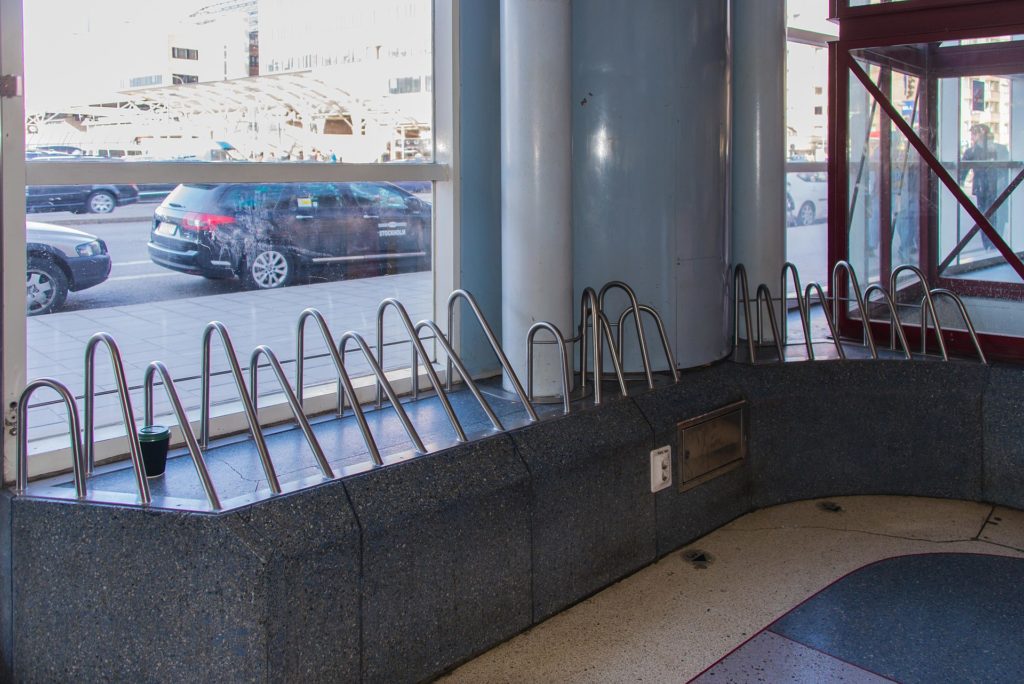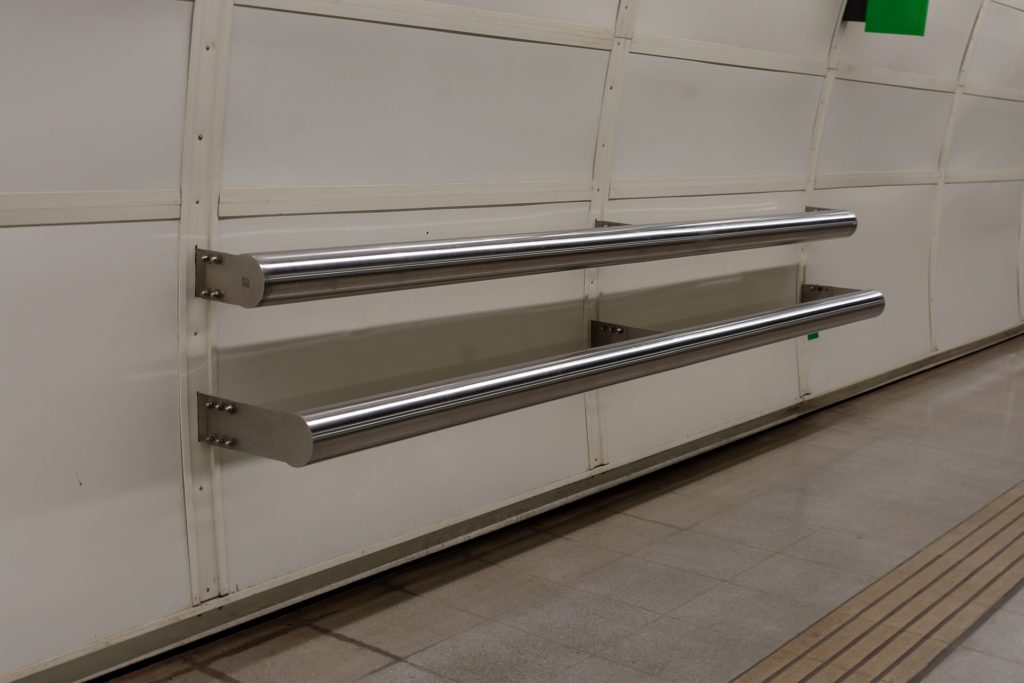
Hostile architecture is an urban-design strategy aimed at preventing people from using public space in undesirable ways. It is a trend that is spreading across large cities in the world.
Also known as defensive architecture, hostile design, or exclusionary design, its purpose is to deter homeless people from gathering in public spaces where their presence could intimidate people who are socializing or are on their way to work or out shopping.
From water sprinklers and pointed cement bollards under bridges to metal spikes on the pavement outside of department stores and metal benches with solid armrests that barely allow for any room to sit comfortably, the urban landscape is certainly changing.
For some, it is a positive change, as it keeps homeless people out of sight and out of mind. For others, it is a cruel way to show the homeless that they are an unwanted part of the social fabric.
With hostile architecture, free social spaces are disappearing, as if invisible barriers are being set up, and people seem to only be allowed to stay on the move out on city streets rather than stop to rest or sit and chat in public.
Hostile Architecture in New York City
In the past few years, New York City has been implementing a hostile architecture design and anti-homeless infrastructure in public spaces, making it uncomfortable and difficult for the homeless to find a moment of respite or a place to rest and socialize.
According to an earlier New York Times report, metal bolts have been placed on ledges at a public plaza, sharp spikes now run the length of railings, and there are metal dividers on park benches. These are all there not for any aesthetic reason but for the sole purpose of dissuading people from resting—even for a little while.
Furthermore, large rocks and uncomfortable designs have been installed underneath bridges to discourage homeless people from sleeping there. Benches have now entirely been removed from subway stations following the initial removal of seatbacks.
New York City’s new train station, the Moynihan Train Station does not have a single seat for waiting passengers to rest. It is great to look at but not great waiting for a train there.
As the city grapples with the issue of homelessness, the implementation of hostile design structures is becoming ever more widespread throughout the city. However, this does not come without a fair amount of criticism.
Hostile architecture is capable of creating further social divisions between the haves and the have-nots, critics say. It also reflects the lack of empathy and understanding for the struggle of people who live on the margins regardless of the reason they may have found themselves there.
Furthermore, this approach only sweeps the problem under the rug. It is by no means a constructive solution for homelessness and only caters to the more affluent people who simply want the homeless out of sight.
Activists, artists, and concerned citizens often mobilize against these designs, advocating for more inclusive and compassionate urban planning.

Defensive Architecture Across the World
Hostile architecture is not limited to New York City, of course. There are glaring examples of defensive design in the rest of the United States and across the world, even in cities not known for such measures. The strategy is being implemented in major urban areas such as Paris, London, Stockholm, Hong Kong, Santiago, Vienna, Rome, and Vancouver among other places.
There, people are being deterred from staying for long in public spaces through the increasing usage of uncomfortable structures which are changing the urban landscape. Regardless, of what you refer to it as—whether defensive design, dystopian planning, natural surveillance, or exclusionary design—the goal is the same: to control behavior and limit the ways an object or space can be (mis)used.
See all the latest news from Greece and the world at Greekreporter.com. Contact our newsroom to report an update or send your story, photos and videos. Follow GR on Google News and subscribe here to our daily email!



